Our writer does a deep dive into the history, legal wranglings,
celebrations and undeniable dynamism of the iconic temple
By Choodie Sivaram, Bengaluru
Siddhivinayak is the mascot of Maharashtra, literally the presiding Deity of the state. The Ashta Vinayaka circuit of ancient temples, the famous Dagadusheth Halwai Ganapati in Pune and many more are power centers of spirituality. The intense, devout fervor during Vinayaka Chaturthi here is an epic celebration of togetherness. Maharashtra has historically been the hub of the Bhakti movement, home to some of the most venerated saints—Sant Tukaram, Sant Jnaneswar, Samarth Ramdas, Namdev, Eknath, Sant Gajanan Maharaj, Sant Gora Kumbhar, Sant Janabai and Sant Muktabai.
Sree Siddhivinayak Temple at Prabhadevi in Mumbai is an icon of the city, where the powerful Lord attracts devotees by the hundreds of thousands. The petite, mischievous-looking murti is flanked on either side by Riddhi and Siddhi (Goddesses of abundance and prosperity), as if They are peeking out from a game of hide and seek.
Thousands throng the temple every day with deep devotion and reverence to catch a glimpse of the Deity. Devotees vouch for miraculous experiences and answered prayers. Like Mumbai, little Siddhivinayak is a city that never sleeps. The temple opens at 4am and shuts close to midnight. On New Year’s Day, nearly 500,000 devotees visited the temple. The administrative officers and staff worked for almost 36 hours straight.
A visit to Siddhivinayak and Mumbai Devi Temple is a must every time I’m in Mumbai. During last year’s visit, one of the trustees said, “You should write about this temple.” Saying yes would mean making a promise in the precincts of the temple, one I wasn’t sure I could fulfill. I felt this temple is so famous, every possible media has covered it. What is left for me to write? Replying “as God wills,” I left the temple with a strange feeling.
A few months later, when I visited the temple again, the thought continued to overpower me. I messaged our managing editor, Acharya Arumuganathaswami in Hawaii, and asked if Hinduism Today had written about this temple. He immediately responded, “We have carried minor news but haven’t featured it. You can write about it if you want.” Here was Ganesha summoning me to the task.
Decades ago when I visited the holy place around midnight, it was brimming with devotees. There is a custom where people whisper a prayer in the ears of the Deity’s vahana. A young lady was whispering into the ears of the mouse for quite a while, as I waited for my turn. To me it seemed she’s not going to leave that tiny mouse. After a while, I requested her to make way for others and she politely moved away. Later my daughter told me that she was a very famous Bollywood actress. What caught my attention was that none of the devotees really bothered about the presence of a film star; they were absorbed in the little hero majestically seated inside.
Experiences of Devotees
Siddhivinayak has been a benevolent bestower of Grace on His devotees; stories of life-changing miracles abound. Nitin Kadam shared with us, “As a trustee for nearly ten years, I would meet a lot of old devotees who would narrate stories of yore and their own experiences. There was a 71-year-old lady who had been coming to the temple every day since she was 13, without missing a single day. Another devotee was coming for the last 35 years. He was of huge build and had difficulty in walking. I would see him panting and sweating, yet he would never miss a single day, even during monsoon.”
Narrating his own experience, Nitin says he was lifted out of the jaws of death miraculously. “In 2013, I had a brain hemorrhage and was paralyzed. My hands and toes were motionless and I was hospitalized for a month. The MRI had shown a big clot. Fifteen days later, when I was taken for another MRI, the clot had vanished. The doctors wouldn’t believe it; they repeated the MRI a few more times, and the clot was not visible. The doctor asked me to go to Siddhivinayak Temple the next day and thank Him, since it was His miracle. With a temporary discharge from hospital, I was taken to the temple in a wheelchair, right up to the Deity. People helped me stand up to place my head on the platform before the Deity. Without my knowledge, my paralyzed hands raised and folded in prayer. I couldn’t stop sobbing. Thereafter, my recovery was swift. Now the neurosurgeon visits Siddhivinayak every week.” Nitin Kadam engages in innumerable welfare activities, and there is not a trace of paralysis in him.
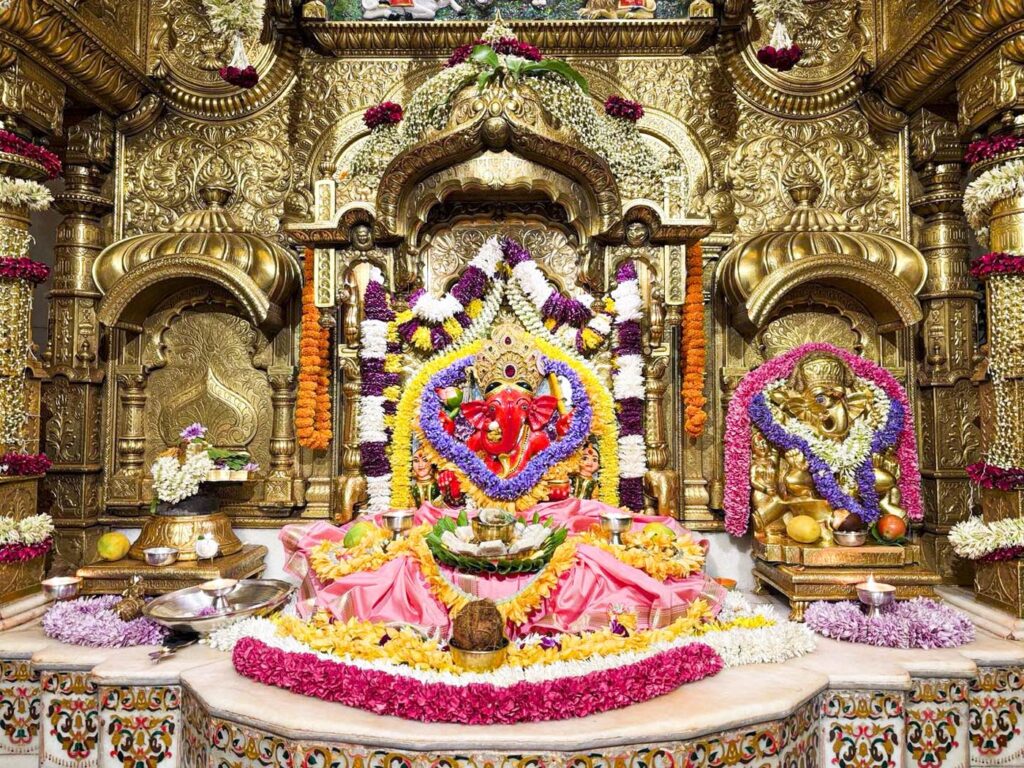
Dnynandeep Patil, an IT professional, is a regular at the temple. “When I visit the temple, I am completely recharged with an energy I cannot explain. When I stand in front of the Deity, I go blank. I’m surrounded by nothingness, and an overpowering peace engulfs me,” he confides.
“More and more youngsters have been coming to the temple. Their faith in God and Hinduism seems to have increased,” observes Dr. Sandeep, when asked about what changes he has noticed in recent times.
The Legend of Siddhivinayak
The first documented evidence of this ancient shrine is an 1801 imprint on a dome in the temple. In India it is a practice to imprint the year of construction on buildings and private houses as well. When the temple was renovated in 1993, this dome was removed and is now preserved as an artifact in the administrative office.
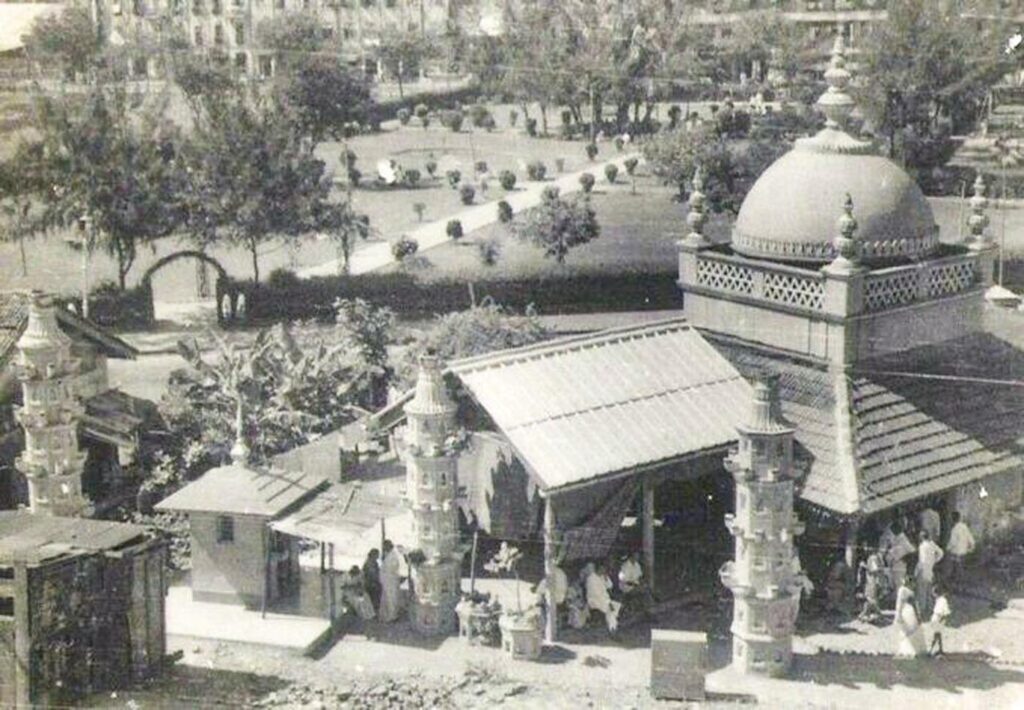
Centuries ago, Bombay was a barren land surrounded by an expansive seashore and vast stretches of coconut groves. Land holding was free, and local families owned huge tracts of land. This murti of Siddhivinayak was on a plot owned by the Patil family. “Nobody knows how this murti came to be there; it is believed to have been kept under a tree by an unknown person who remained there and worshiped the murti. Prayers were being answered, and gradually the place attracted more people. A lady from the Patil family had made a vow to build a temple if their prayers were answered. It is said that their prayers were not answered, yet she built a modest temple for Ganesha. Today the temple is at that very spot where Ganesha was first placed,” explains Nitin Kadam, a former trustee.
The Siddhivinayak murti with Riddhi and Siddhi beside Him is a single piece carved out of black stone, measuring two feet in width and 2.5 feet in height. Vinayaka’s trunk is to His right, believed to be a boon-bestowing form. Etched on the Deity’s forehead is a third eye, like that of His father, Lord Siva.
The murti is now saffron colored, smeared with sindhur (red cosmetic powder). “There is no record of when the practice of smearing sindhur began, but we continue to do it every year to protect the murti from deterioration. This is done for six days, in accordance with the shastras. Expert artists from JJ School of Art are tasked with removing the old sindhur and applying a fresh coat. The murti is fragile and prone to deterioration, especially because abhishekam is performed regularly. Flowers and offerings also contain moisture, which can affect the murti,” says Dr. Sandeep Rathod, Deputy Executive Officer.
It is said that the temple has been managed by random people, some believed to be from the Patil family. Regular puja and worship protocols started in 1936 when revered saint Jambekar Maharaj entrusted the responsibility to Govindrao Pathak, a mill worker. A management committee was formed and the temple administration was vested with government officers. Owing to old age, Govindrao Pathak recused himself from service in 1973.
As the temple’s income increased steadily, there were allegations of mismanagement, lack of accountability and ownership claims, which dragged the temple into litigation. The Patil family had disintegrated.
Legal Battle Inspires a Special Act
A judgment of the Bombay High Court in the Indira Dattaram Patil case states that the Siddhivinayak Temple was built by Sunder Patil, who died in 1870. After his demise, his sons Tukaram, Manik and Janu took on the management. Janu died in 1928; Tukaram and Manik had passed earlier. Disputes arose between Janu’s widow, Jiwoobai, and Manik’s son Kashinath over the right of management. Kashinath went to court in 1932. Four years later, in 1936, the litigants entered into a compromise agreement to appoint an Official Trustee of Bombay as the sole trustee. Jiwoobai was made the manager. The consent decree mandated that after Jiwoobai’s demise, a male member of the family of Sunder Patil should be appointed as the manager. When Jiwoobai died in 1940, disputes arose between Kashinath and other members of Patil family and the Official Trustee. The temple got entangled in legal disputes.
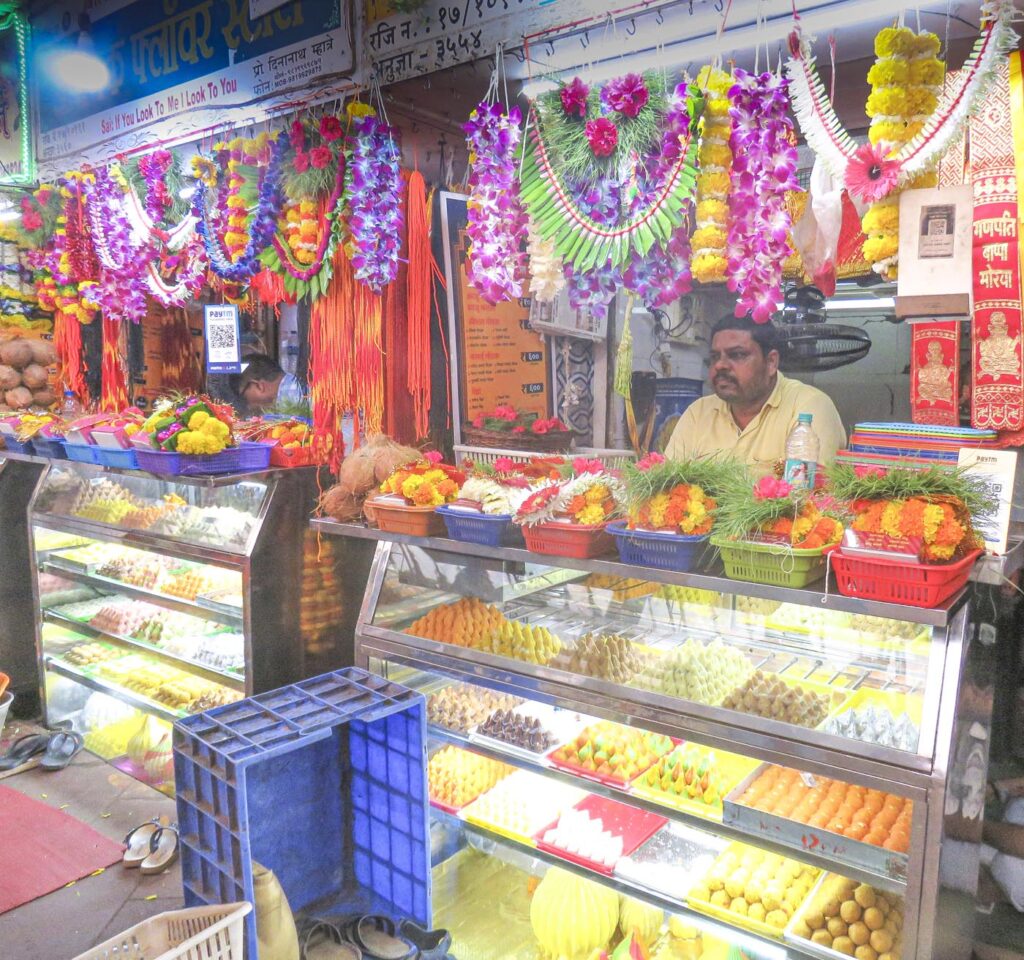
In August 1955, heeding an application by the Official Trustee, the Charity Commissioner registered the temple as a Public Trust (under the Bombay Public Trusts Act). The temple was now under his authority. In 1975 the Bombay High Court upheld the registration of the temple as a Public Trust. Defiant of the court orders, the Patil family continued to treat this registration as illegal, and disputes ensued.
Huge donations kept flowing in, and the Trust acquired large properties. Owing to continuous litigation, the growing income of the temple could not be fully utilized. On October 11, 1980, the Governor of Maharashtra enacted the Sree Siddhi Vinayak Ganapati Temple Trust (Prabhadevi) Ordinance, which paved the way for the Sree Siddhivinayak Ganapati Temple Trust (Prabhadevi) Act, 1980. This put an end to all the court cases and claims by the Patil family and gave stability to the temple. The temple is now governed by this special Act, under the jurisdiction of the Ministry of Law and Judiciary, government of Maharashtra. The Act confers powers on Sree Siddhi Vinayak Ganapati Temple Trust Managing Committee to manage and run the temple.
In order to accommodate the surge of devotees, in 1993 the old structure was replaced by an architecturally vibrant palatial building. Without disturbing the sanctum sanctorum, six stories built in multiangular style were added. Five stories house the administrative offices, kitchen for preparing naivedya for the Deity, and storage space. The kumbhabhishekam was performed in June 1994 by His Holiness Sri Bharathi Theertha Mahaswamiji, 36th Jagadguru of Sringeri Sharada Peetham.
Three huge doors leading to the sanctum sanctorum facilitate a steady flow of hundreds of devotees. Nearby, the spacious, well-ventilated pavilion is used for performing Satyanarayan puja and Ganesha homa. A decorative arch akin to the Rajagopuram is under construction at both entrances. An adjoining plot is being converted into an underground parking facility to ease parking problems for devotees.
A Staff of Three Hundred
Including the priests, nearly 300 people work at the temple. It is mandatory for priests to be qualified in Vedic knowledge from a recognized institution of Vedic studies.
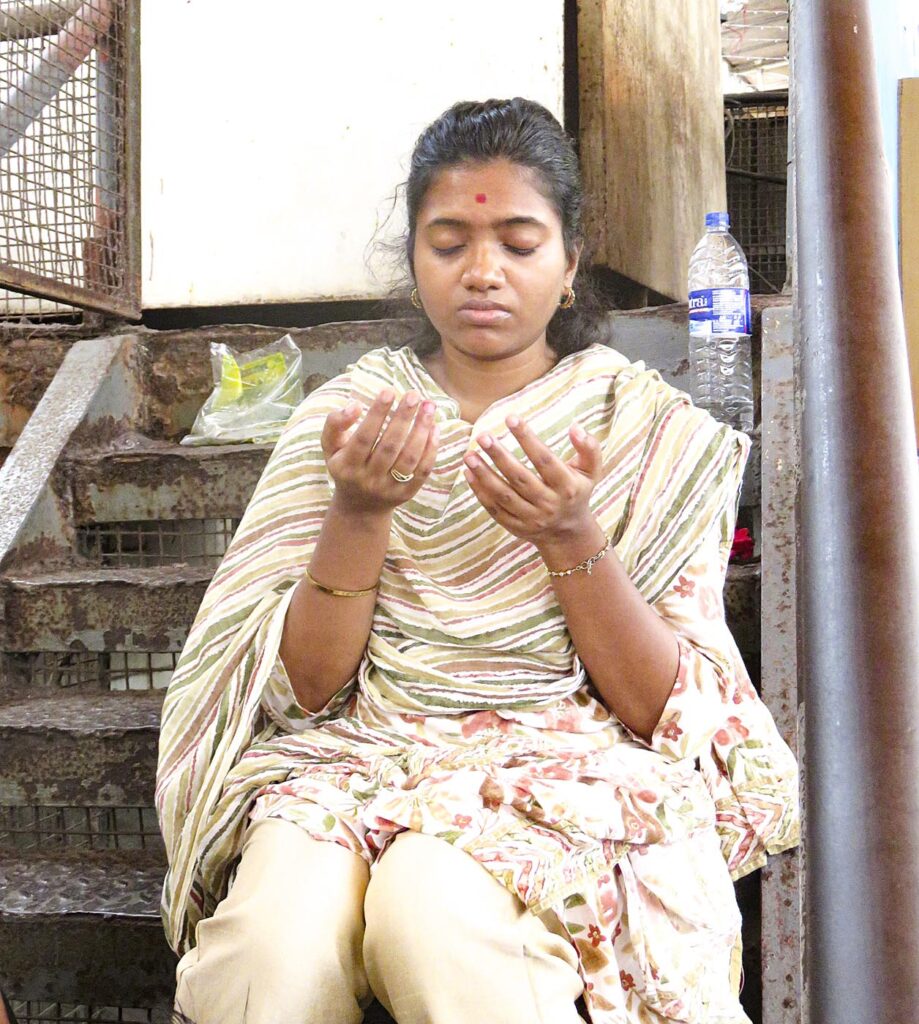
I wanted to visit the temple on Vinayaka Chaturthi to take photographs. I had expected the administration to decline permission, considering how crowded the temple would be and the tremendous pressure on them. I didn’t expect them to answer my call; if they did, I thought they would say “Oh, not today. Please come another day.” To my surprise, not only did Dr. Sandeep Rathod respond to my call; without any hesitation, he welcomed me to the temple and permitted me to take photos. Since I was carrying a camera, he ensured I got a hassle-free entry by keeping the security informed. There I was, in the midst of thousands of devotees.
The staff or security persons never lost patience with the crowd or loudly ordered them to move. Dr. Sandeep and Veena Patil, the Executive Officer, overseeing crowd management since early morning, were calm and poised. During my visits, a remarkable feature I noticed is the crowd behavior. Visitors are completely absorbed in their prayers and chants of Jai Siddhivinayaka and Ganapati Bappa Moraya as they move in the long, winding line waiting to catch a glimpse of their Siddhi Vinayaka. There were no petty fights, squabbles or displays of impatience. Special facilities are provided for senior citizens, differently-abled persons and pregnant women.
Nearly forty thousand people visit every day. The numbers go up to 200,000 on special days and Tuesdays, which are auspicious for Vinayaka. Starting the day at 4am, the temple shuts close to midnight. On Tuesdays and festival days, the temple opens at 3am and closes past midnight.
Every day, some 25 to 30 VIPs—film stars, businessmen, politicians and sportsmen—visit the temple. “Taking care of VIP visits is challenging, but we make sure the common devotee is not disturbed,” says Dr. Sandeep.
Festivals and Activities
Ganesha Chaturthi is the most significant festival in Maharashtra. The temple also celebrates other Hindu festivals with equal fervor. Magh Ganesh Jayanti and Angarak Chaturthi draw hundreds of thousands of devotees from 2am onwards. Other festivals celebrated at the temple are Ram Navami, Hanuman Jayanti, Krishna Janmasthami, Gudipadwa, Navaratri and Mahashivaratri.
Income & Charity Work
The temple’s only source of income is the offerings from devotees. The annual income is around US$15 million, with no funding received from the government.
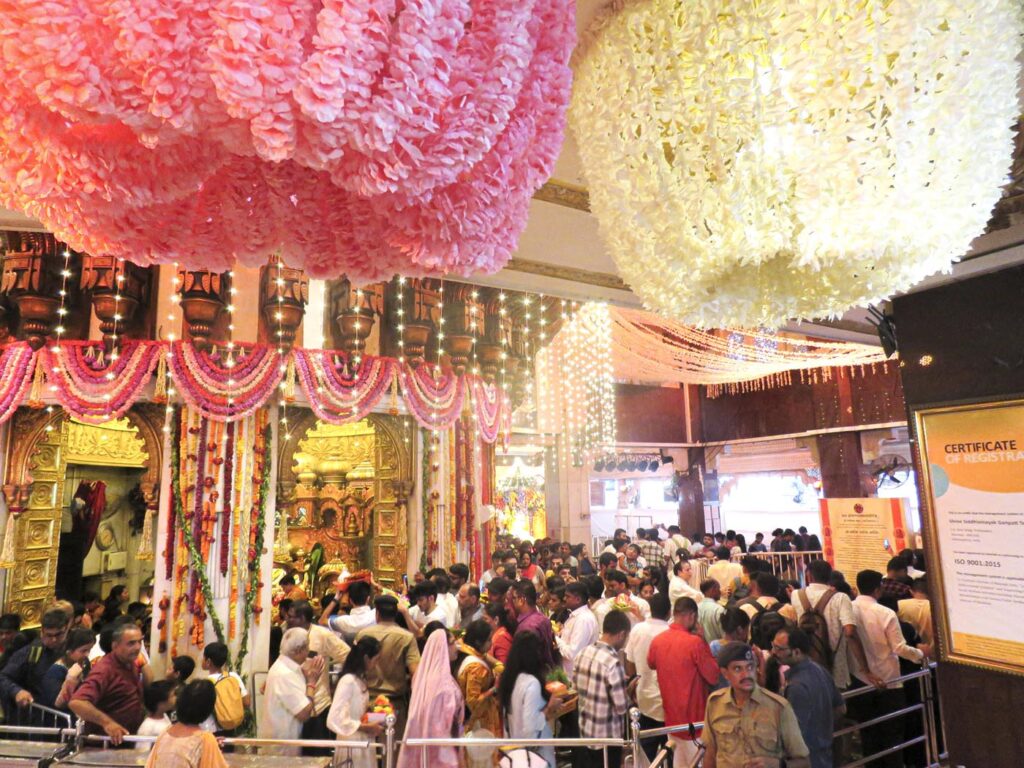
Interestingly, the little Lord pays income tax on His earnings. Nitin Kadam shared with me, “We are allowed to spend only ten percent of the income to run the temple, which includes expenditure on pujas, prasad, staff salaries, maintenance, etc. Unspent funds go into savings, which is taxed. Interest earned on the savings is also taxable. The temple is engaged in extensive charity and social development, providing medical assistance to the needy to help them cover hospital bills. Though the amount is nominal, we are hoping to increase it with government approval. The number of people receiving this assistance is huge, so the outreach is considerable. A grant of about US$1146 is given for hip replacement, knee replacement and cochlear implant.”
The temple conducts blood donation camps and free eye clinics, provides modern equipment and infrastructure to government and municipal hospitals in rural areas, supports numerous dialysis centers, and also maintains a medical ward at Wadia Hospital.
“Our main focus is on rural areas,” Sunil Giri, a trustee, told me. “The temple runs treatment centers for thalassemia patients needing blood transfusion. A village in Ratnagiri district that was submerged by floods was completely rebuilt in 2019 with new buildings using Siddhivinayak funds. The second phase of this project is underway. At a cost of US$2.4 million the temple is also supporting government irrigation programs to provide potable water to all the districts.” In 2024, the temple pitched in to help flood-affected districts in Maharashtra.
Annually, it gives textbooks and study material to thousands of students. A well-stocked modern library in the temple precincts caters to students preparing for competitive exams. A digital library exclusively for the visually impaired along with the book bank have been a boon for innumerable students and institutions.
Inside the sanctum sanctorum, Siddhivinayaka looks innocent, oblivious to all the power of His glory. He bestows abundant grace on every seeker; even a casual visitor becomes a staunch believer. No devotee returns empty-handed from His abode.
About The Author
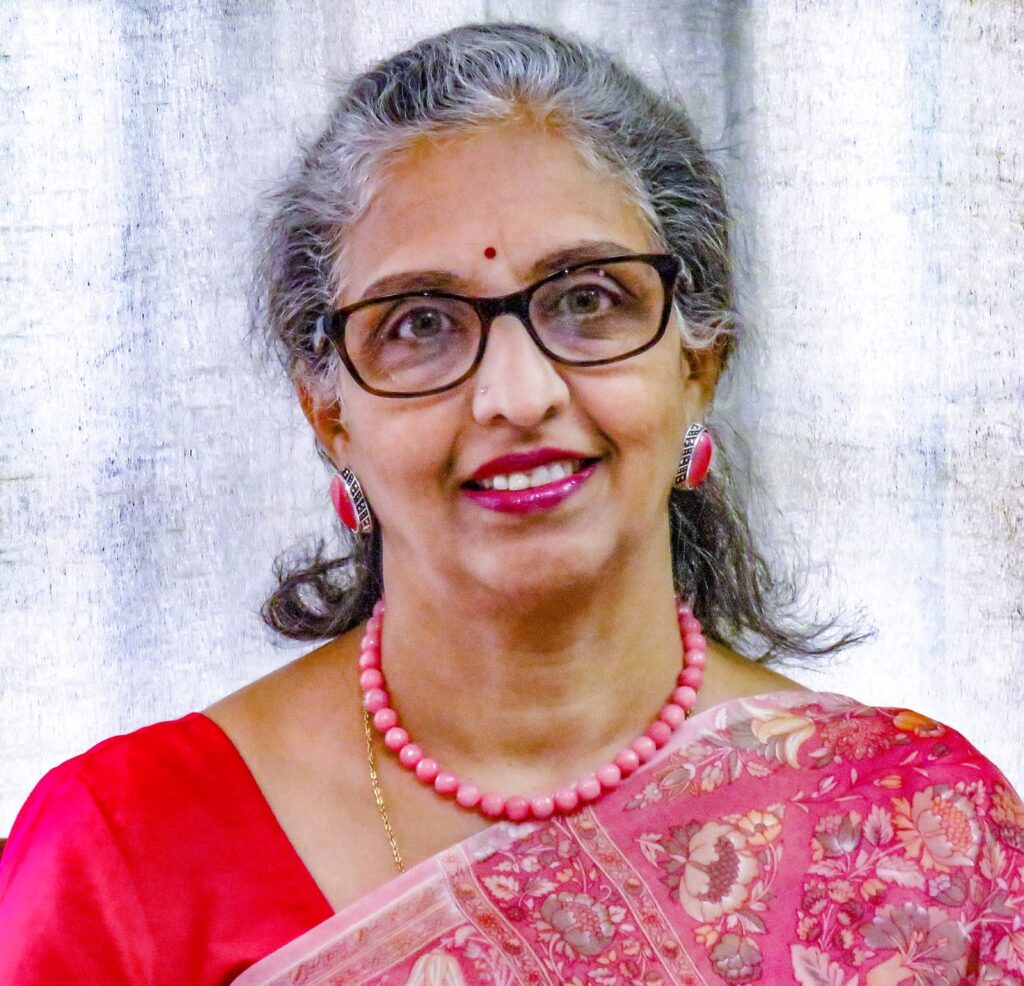
Choodie Sivaram has been a journalist for over three decades. She writes on current affairs, policy matters, constitutional and legal issues, heritage and culture. She wrote and directed the documentary, “At the Altar of India’s Freedom—The INA Veterans of Malaysia,” produced by the Indian High Commission in Malaysia. Choodie holds degrees in journalism and law.
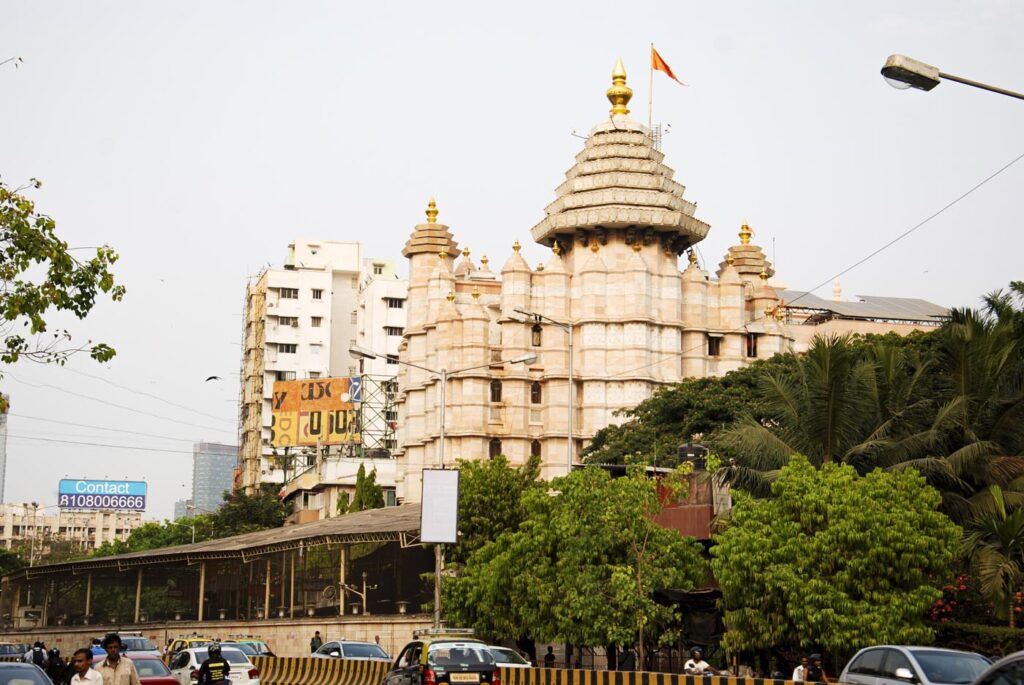
Very nicely written, Choodie!
You have covered the history of the temple very well, and I’m impressed by your simple yet excellent narration.
Keep writing!!
Warm Regards,
Ramesh (Your erstwhile house owners’ family friend)
+91 91085 52645
Ganpati bappa morya
Choodie well done🤗
A very nice and educative article, Choodie!! In a fast paced city like Mumbai, this temple enables one to pause and recharge their batteries!!
Choodie,
Heartiest congratulations on bringing out this beautiful article on Siddhi Vinayak temple Prabhadevi. I have been visiting this temple since the 1960s. U have done a deep dive into the history of the temple and chronologically brought out its emergence to the present state with various twists and turns. It makes a very interesting reading. Keep writing on all possible topics as it brings out many facts not known to readers🙏
Wonderful writing, Choodie. Such a well structured article. It is believed that when Lord Ganesha wrote the Mahabharata dictated by Sage Vyasa, he never lifted his hand once. This article too looks like a such a lovely flow with Ganesha dictating and Choodie being the scribe. Great article again!!!